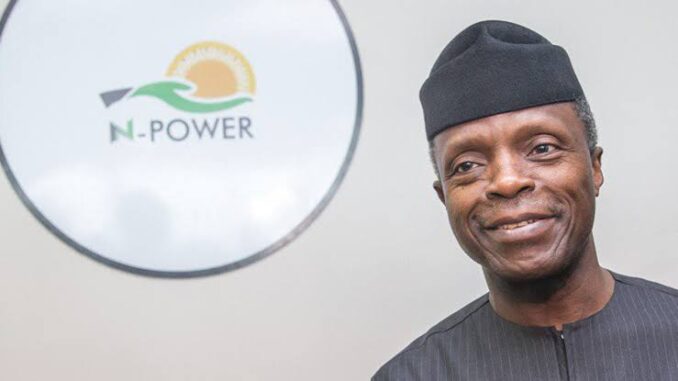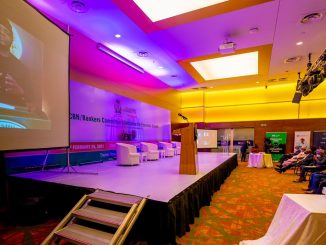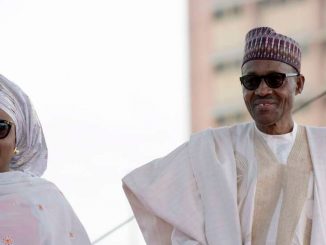
By Ifedayo Peters
The Social Investment Programme was perhaps one of the biggest talking points of the Buhari administration in its first term in office. The results were staggering and the reach undeniable. In fact, many Nigerians who often claimed they had not received government support in the past had a change of heart.
The accolades from the World Bank, Oxford University, Desmond Tutu Foundation, African Bankers Awards and many more were only testament to the efficacy and impact of the SIP.
It is important to note that Nigeria never had a Social Safety Net (SSN) before the Buhari administration and there was no person better to lay the foundation than Vice President Yemi Osinbajo, whom President Buhari entrusted with the massive project.
What was the objective of the NSIP?
With the sole intention of tackling poverty and hunger across the country, the Federal Government of Nigeria in 2016 established the National Social Investments Programmes (NSIP) the largest social investment portfolio in Africa. It was stratified into four major components namely: National Home Grown School Feeding Programme (NHGSFP) Government Enterprise and Empowerment Programme (GEEP) Conditional Cash Transfer (CCT) Job creation and Youth Employment (N-Power).
Summarily, the National Home Grown School Feeding Programme (NHGSFP) was expected to increase the enrolment of school children and reduce the dropout rate, address the issue of poor nutrition of these children arising from poverty, and to encourage local agricultural production.
Government Enterprise and Empowerment Programme (GEEP) is a broader arm. This programme targets traders, market women, women cooperatives, artisans and Small and medium enterprises (MSMEs) as well as enterprising youths, farmers and agricultural workers with the purpose of providing financial services (loans). The loans ranged between N10,000 and N100,000 with no interest and demand for collateral. These loans were distributed in three ways; Market moni, Farmer moni and Trader Moni.
ALSO READ: Why Osinbajo must get APC presidential ticket
Under the CCT, direct cash transfers are made to five million vulnerable people in the society, where each beneficiary receives N5,000 per month. The ultimate goal is to improve the quality of life of this class of people who are indigent, too old to labour or physically challenged.
The N-Power by design is to help young Nigerians acquire and develop life-long skills to make them active players in both domestic and global markets. It targets graduates, skilled, unskilled and out-of-school youths between the ages of 18–35 years. The stipend is N30,000.00 a month per beneficiary.
Largely described to be a brainchild of Vice President Yemi Osinbajo, the award-winning initiative was supervised by his office between 2016 its year of inception, until 2019 when it was institutionalised under the Ministry of Humanitarian Affairs, Disaster Management and Social Development which has Sadia Umar Farouq as its overseer.
How did the NSIPs fair under Osinbajo?
There have been several controversial positions about the true impact of this programme, particularly about its current state under the Honourable Minister, Mrs Sadia Farouq.
A 2019 research publication by the duo of Roseline Onah (PhD) and Charles Olise of the University of Nigeria, titled “National Social Investment Programme and Sustainable Poverty Reduction in Nigeria” and available on www.iosrjournals.org however reveals the following on the SIPs between 2016 and 2018 under the Vice President: under the National Home Grown School Feeding Programme, a total of 9,300,892 pupils from 49,837 schools were being fed (It is crucial to add that the current number of out-of-school children in Nigeria is 10.5 million, a significant drop from 13.2 million in 2015, a year before the inauguration of the social welfare programmes).
The direct implication of the above was employment for 96,972 cooks who were engaged daily for as long as the academic calendar stipulated. 520,000 persons, skilled or unskilled, benefitted under the N-power programme under the Conditional Cash Transfer, 297, 973 poor people were reached and paid every month.
Under the Trader Moni arm of the GEEP, a total of 1,061, 592 persons benefitted; 317,212 benefitted under the Market Moni arm; 4,084 cooperatives were beneficiaries of the loans disbursed under GEEP while third party monitors numbering 1,689 were paid. A total of 551, 755 poor and vulnerable households in 23 states were documented in the National Social Investment Register.
Worthy of note is the fact that these achievements were made possible under three years with only a fraction of the total appropriation released by the National Assembly for the NSIPs from inception.
A statement in 2020 by the Special Adviser to the President on SIPs, Maryam Uwais, revealed that of the N1.7 trillion total appropriation for the four NSIPs, funds released between 2016 and 2019 totalled N619.1 billion, “constituting just 36.4% of the total appropriation from the NASS.”




